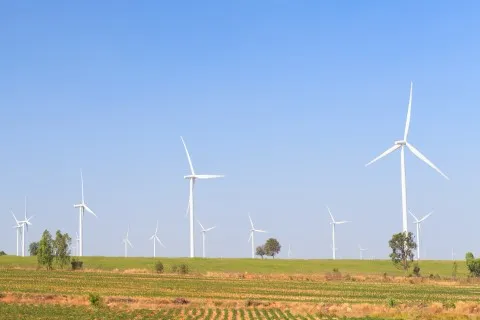
Japan's wind power will be just 0.8% of energy mix by 2026
No thanks to government's focus on cutting generation costs.
Wind power will remain a marginal source of renewable energy in Japan over the coming decade, as the government continues to focus on cheaper alternative power sources in a bid to reduce electricity costs, according to BMI Research.
Geographic limitations will represent an additional hurdle to onshore wind, whilst the offshore wind sector will be curbed by the nascent state of the sector and the lack of Japanese expertise in developing the technology.
Here's more from BMI Research:
We remain cautious with regards to growth in Japan's wind power sector over the coming decade. Our downbeat outlook can in large part be attributed to the Japanese government's focus on reducing power generation costs, after retail electricity prices spiked in tandem with increasing fossil fuel imports as nuclear came offline in the aftermath of Fukushima.
Given the nascent state of Japan's wind power sector, and the relatively lower cost of solar power in the country, we do not expect the government to prioritise wind power.
This informs our expectation that wind will only comprise 0.8% of Japanese power generation mix in 2026.
The Japanese wind sector growth strategy envisions robust onshore wind power capacity expansion in order to meet growth targets over the coming decade.
However, we believe the potential for the deployment of onshore wind will be capped by the lack of available land close to power demand centres, given the country's high population density.
Conversely, less populated mountainous areas with higher wind speeds typically have poor access to the Japanese power grid - and we expect transmission & distribution (T&D) investment to centre on integrating existing solar power capacity, as opposed to facilitating onshore wind new-builds.
Another issue for onshore wind power has been the relatively high cost of power generation compared to that of solar power in the country.
As such, the solar capacity surge we observed after the Fukushima disaster was not replicated in the wind power sector.
With the government now curbing solar growth in order to ensure economic sustainability, there is limited scope for a substantial ramp-up in growth for the relatively more expensive wind sector. This will mean that onshore wind power capacity growth remains capped - and we forecast wind capacity to total 5.4GW by 2026, up from 2.3GW by end-2016.











 Advertise
Advertise











